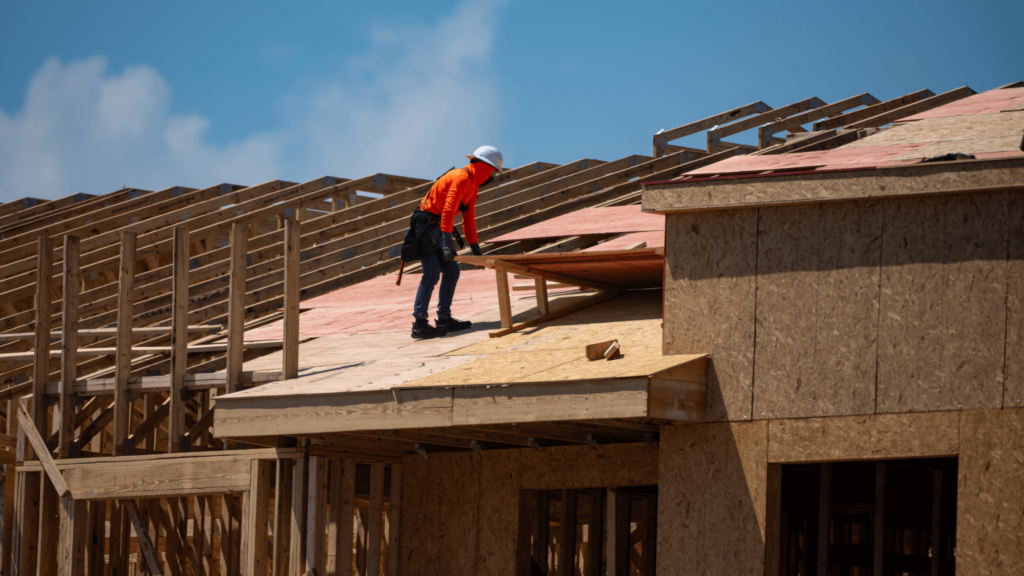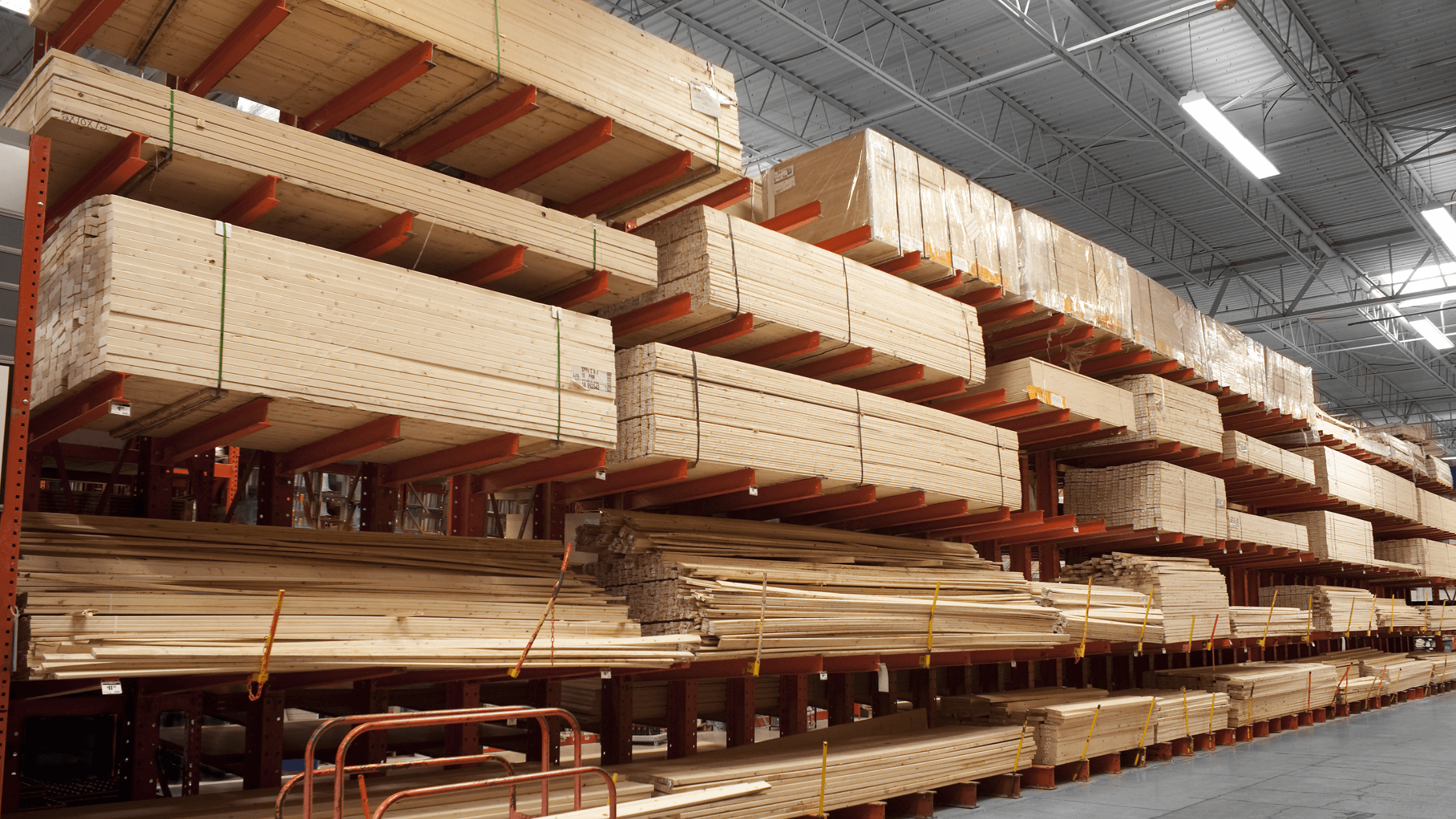Analysts expect Donald Trump’s tariff plan to drive up construction costs and make homes even more expensive for buyers in 2025. The plan includes a 25% tariff on building materials from Canada and Mexico, two major suppliers for the U.S. housing market. Both Canada and Mexico retaliated, leading to a 30-day pause on the proposed tariffs until recently when Donald Trump implemented a reciprocal tariffs strategy. With the tariff war likely not slowing down anytime soon, construction leaders have expressed their concerns over serious economic effects, such as pushing home prices higher and making the unaffordability crisis even worse.
How tariffs could disrupt home construction

America is facing a housing crisis. Rental prices are much higher than the inflation rate, and many Americans now spend over 30% of their income on housing. Without governmental action, the market won’t be able to fix the issue. When President Donald Trump took office on January 20, 2025, he promised to help with high prices. He aimed to lower housing costs and increase the supply of homes.
Within a few weeks after making this pledge, President Donald Trump proposed a 25% tariff on building materials from Canada and Mexico. Many industry experts believe these tariffs will have the opposite effect.
In January 2018, during his first run as president, he set 25% tariffs on steel and 10% on aluminum. This caused real income to drop and inflation to rise. The new tariffs Trump wants to implement are even more comprehensive. The tariffs Trump is proposing in 2025 include steel and home-building materials such as wood and drywall.
Here is what analysts warn may happen to the U.S. construction industry if the tariffs are implemented:
- Rising lumber costs— Over 70% of softwood lumber used in U.S. home construction is imported from Canada. Tariffs on lumber could cause shortages and delays in home construction since builders frequently use wood.
- Cement and concrete shortages – About 25% of cement used in U.S. construction is imported, with Canada and Mexico as major suppliers. Tariffs could make it more expensive to source concrete components, affecting both residential and commercial projects.
- Rising drywall and plaster costs— In 2023, the U.S. imported $456 million worth of lime and gypsum products, with 71% coming from Mexico. These materials are essential for drywall and plaster, so builders may face higher costs and potential delays in finishing homes.
- Higher home prices – CoreLogic analysis suggests that Trump’s tariffs could push home construction costs up by 4% to 6% over the next 12 months, potentially adding between $17,000 and $22,000 to the average new home price.
- Labor market strain – Increased costs often force builders to scale back projects, potentially leading to job losses in the construction sector.
Combined, these factors will make it even more challenging for Americans to purchase new homes, as consumers often bear rising costs.
Why does Trump want tariffs?
President Donald Trump has defended his tariff plan as a way to protect American manufacturing jobs and strengthen national security. In a recent statement, he said the U.S. needs “reciprocal trade policies,” arguing that tariffs will level the playing field with other countries.
The White House argues that reducing dependence on foreign imports will help stabilize the economy and protect industries from supply chain disruptions. A fact sheet from the White House administration pointed to past steel tariffs, saying they led to job growth and higher wages in the metals sector.
The National Association of Home Builders (NAHB) has been one of the most vocal opponents of Trump’s plan. It argues that tariffs on Canada and Mexico will slow residential construction and increase home prices. In a letter to the president, NAHB Chairman Carl L. Harris warned that tariffs on Canada and Mexico would “lead to higher material costs, which home builders will ultimately pass on to home buyers in the form of increased housing prices.”
The letter also pointed out that home builders are already facing rising costs, with construction material prices increasing over 30% since 2021.
Harris also cautioned that tariffs could disrupt the supply chain further, making it harder to meet housing demand and delaying rebuilding efforts in disaster-affected areas. “Bringing down the cost of housing will require a coordinated effort to remove obstacles to construction, be they regulatory, labor or supply-chain related,” the letter stated.
Despite these warnings, Trump and his team still believe that tariffs will bring more manufacturing back to the U.S., helping to reduce reliance on foreign suppliers.
How Canada and Mexico are responding
Canada and Mexico play major roles in the U.S. construction supply chain, providing materials such as lumber, steel, and gypsum. Thus, it’s no surprise that after the Trump administration threatened to impose a 25% tariff on these imports, the countries retaliated.
Prime Minister Justin Trudeau called the tariffs “unjustified,” warning that they would lead to job losses and drive up costs for both countries. In response, the Canadian government initially imposed its own 25% tariffs on $155 billion worth of U.S. goods, targeting products that included orange juice, beer, coffee, and paper.
However, after the U.S. announced a 30-day pause on its tariffs, Canada also agreed to delay its countermeasures, keeping the door open for further negotiations.
The Mexican government plans to challenge the Trump administration’s 25% tariffs on steel and aluminum, similarly arguing that they are unfair and unjustified given that Mexico imports more of these materials from the U.S. than it exports. Secretary of Economy Marcelo Ebrard stated that Mexico faced a $6.8 billion trade deficit in these products in 2024 and will present its case to U.S. officials.
The upcoming months will likely determine whether the tariffs are implemented. If the negotiations don’t pan out, preparing for a potential trade war is not out of the question.
What the 25% tariffs mean for the economy and builders
Trump’s 25% tariffs on building materials from Canada and Mexico threaten to push housing costs even higher and slow new construction. With material prices already up 30% since 2021, additional tariffs could add billions in extra costs, making building and buying homes even harder. Builders may scale back projects, limiting supply and worsening affordability at a time when demand remains high.
That said, the construction industry adapts quickly and will likely find new ways to continue building efficiently. This could mean a greater push for 3D printing or greater reliance on prefabricated materials to cut costs. However, most industries still depend on global trade to obtain the materials they need, and construction is no exception.
Want to stay updated on policies that impact housing, construction, and the economy? Don’t forget to subscribe to our newsletter—you’ll get the latest insights, expert analysis, and industry updates straight to your inbox.




1 comment